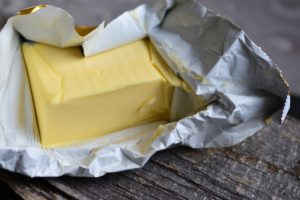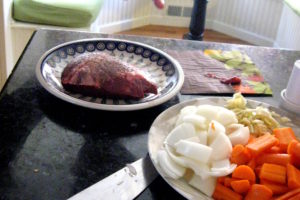Juice and kids seem to go hand in hand in our culture. Preschool snacks are accompanied by juice. Picnics and playgroups include juice. Many families include orange juice with breakfast. Children drink juice pouches with their lunch everyday. So we buy organic, or juices that say 100% pure juice in hopes of filling our kids with nutrients and vitamins. So what is so wrong with juice? Why do I personally try to avoid giving it to my children? There are many reasons and I will try to cover them all in this post. Juice is a hot topic I am passionate about because even some of the most health conscious people I know still believe juice is okay to give children. Why not? It has vitamin C and “100% fruit” in it. Some even choose the organic juice with water. It is culturally ingrained that you have orange juice for breakfast and apple juice with lunch. Let me explain the reasons why I feel store bought juice is not necessary and can cause more harm than good.
Reason 1: fructose aka sugar: The biggest reason I feel one should avoid giving children juice is the sugar without fiber…but don’t they need sugar? Children do not need nearly as much sugar as there is in one cup of juice. One cup of apple juice has approx 22-30 grams of sugar in it. That is more than the recommended sugar for an adult to consume in an entire day-in one cup of apple juice. Here is the other thing-there is no fiber to help slow the sugar into the system. When you remove fiber, what is left is sugar. This wreaks havoc on the pancreas and an overworked pancreas leads to insulin resistence. The blood sugar spikes and plummets that accompany this are not fun to deal with, especially with toddlers. According to Mark Sisson from Mark’s Daily Apple: “Drinking pure juice has an effect that is really no different from chowing a candy bar or slamming a soda” Read more HERE. I looked up a couple of juices marketed as “healthy” and the sugar content. One small container of Odwalla orange juice has 35 grams of sugar in it-that is like 3 days worth of sugar (or more) for a child in one beverage. This is in one serving-many kids drink 2-3 servings per day. Bolthouse Farms 100% pomegranite juice has 31 grams of sugar. In Bolthouse Farms “daily greens” juice, the first ingredient is pear juice.
Paleo Diet Lifestyle listed 10 reasons why we should limit fructose consumption:
- “Fructose can only be metabolized by the liver and can’t be used for energy by your body’s cells. It’s therefore not only completely useless for the body, but is also a toxin in high enough amount because the job of the liver is to get rid of it, mainly by transforming it into fat and sending that fat to our fat cells.”
- “Excess fructose damages the liver and leads to insulin resistance in the liver as well as fatty liver disease. In fact, fructose has the same effects on the liver as alcohol (ethanol), which is already well known as a liver toxin.”
- “Fructose reacts with proteins and polyunsaturated fats in our bodies 7 times more than glucose. This reaction creates AGEs (Advanced glycation end-products), which are compounds that create oxidative damage in our cells and ultimately lead or contribute to inflammation and a host of chronic diseases.”
- “Fructose increases uric acid production, which, in excess, can cause gout, kidney stones and precipitate or aggravate hypertension.”
- “While most of your body’s cells can’t use fructose as a source of energy, the bacteria in your gut can and excess fructose can create gut flora imbalances, promote bacterial overgrowth and promote the growth of pathogenic bacteria.”
- “In part because of the damage done to the liver, chronic excess fructose causes dyslipidemia, which means that your blood lipid markers tend to shift towards numbers that indicate a risk for heart disease”.
- “Fructose rapidly causes leptin resistance. Leptin is an hormone that controls appetite and metabolism to maintain a normal weight. Leptin resistant people tend to gain fat and become obese really easily.”
- “Excess fructose alone can cause all the problems associated with the metabolic syndrome (diabetes, obesity, heart disease, …).”
- “Cancer cells thrive and proliferate very well with fructose as their energy source.”
- “Excess fructose also affects brain functioning, especially as it relates to appetite regulation. It has also been shown to impair memory in rats.” Read more here Paleo Diet Lifestyle
Reason 2: no nutrients! What about Vitamin C? Did you know that most of the vitamins in commercial juices are destroyed during pasteurization and factory processing? So the “100%” vitamin C is usually synthetic vitamin C added to the processed juice. There are tons of other real nutrient dense sources of vitamin C including: peppers, broccoli, kale and other dark greens, oranges, strawberries, herbs, kiwi, guava and papaya. If you eat the whole fruit you are getting fiber to help with slowing the sugar into the system. If you eat vegetables sources you are getting even less sugar with your vitamins. Think local and fresh!
Reason 3: factory produced/usually old: The bottle of Tropicana that says 100% orange juice/not from concentrate etc…is not fresh like you think it is. According to THIS and THIS the orange juice is stored sometimes for over a year.
According to Food Renegade:
“Making OJ should be pretty simple. Pick oranges. Squeeze them. Put the juice in a carton and voilà! But actually, there is an important stage in between that is an open secret in the OJ industry. After the oranges are squeezed, the juice is stored in giant holding tanks and, critically, the oxygen is removed from them. That essentially allows the liquid to keep (for up to a year) without spoiling– but that liquid that we think of as orange juice tastes nothing like the Tropicana OJ that comes out of the carton. (source). In fact, it’s quite flavorless. So, the industry uses “flavor packs” to re-flavor the de-oxygenated orange juice: When the juice is stripped of oxygen it is also stripped of flavor providing chemicals. Juice companies therefore hire flavor and fragrance companies, the same ones that formulate perfumes for Dior and Calvin Klein, to engineer flavor packs to add back to the juice to make it taste fresh. Flavor packs aren’t listed as an ingredient on the label because technically they are derived from orange essence and oil. Yet those in the industry will tell you that the flavor packs, whether made for reconstituted or pasteurized orange juice, resemble nothing found in nature. The packs added to juice earmarked for the North American market tend to contain high amounts of ethyl butyrate, a chemical in the fragrance of fresh squeezed orange juice that, juice companies have discovered, Americans favor. Mexicans and Brazilians have a different palate. Flavor packs fabricated for juice geared to these markets therefore highlight different chemicals, the decanals say, or terpene compounds such as valencine. The formulas vary to give a brand’s trademark taste. If you’re discerning you may have noticed Minute Maid has a candy like orange flavor. That’s largely due to the flavor pack Coca-Cola has chosen for it. Some companies have even been known to request a flavor pack that mimics the taste of a popular competitor, creating a “hall of mirrors” of flavor packs. Despite the multiple interpretations of a freshly squeezed orange on the market, most flavor packs have a shared source of inspiration: a Florida Valencia orange in spring. (source) –Food Renegade
So what about juicing at home with a juicer?
Juicing at home is quite different for several reasons. You can juice both vegetables and fruits, lowering the amount of fructose in the beverage. You are juicing fresh produce that has not been processed (heat treated, factory treated, pasteurized) so the vitamins are still intact (as long as you are consuming right after juicing and not storing). I would suggest organic produce as many juicers do not require removing the skins. You do not want chemicals and pesticides in the juice. Many children are picky when it comes to eating veggies, and juicing mostly veggies with a little bit of fruit to sweeten it can help them get those nutrients quickly. Therefore, I think it can be beneficial, especially when you add superfoods like kale, parsley, etc. We juice at home on occasion, especially after traveling and eating less than desirable foods. However, keep in mind the fructose load on the body when juicing fruits-you are still removing the fiber.
Here are what some of the paleo experts are saying regarding juicing at home:
“When you juice at home, don’t make a large batch. Juice breaks down pretty quickly. To maximize nutrition (and taste), be sure to make it fresh daily.” Read more: Mark’s Daily Apple
According to Paleo Plan: “The juice we make at home can be from local, organic, unadulterated fruits and vegetables that don’t have any weird chemicals or extra sugars added to them. Even when store bought juices don’t have added sugar, they’re still loaded with it. For instance, your 16 ounce Acai Naked juice (no sugar added) has about 48 grams of sugar in one bottle. That’s more than a 12 oz can of Coke (39 grams). Even the “veggie” Naked juice has 36 grams. (By the way, that 16 ounce Acai Machine Naked drink contains 320 calories if you drink the whole thing.) Fresh, homemade juice is full of nutrients and enzymes that packaged juices just don’t contain.That’s why they have to ADD vitamins and other nutrients to the juices (check out your Naked juice label here for proof). Manufacturers are required to pasteurize (heat) juices, including Naked and other similar brands. That means you lose a lot of the beneficial enzymatic properties of the juice, and many of the other vitamins are diminished, as well. So besides the fact that the juice is definitely NOT fresh, it’s also blasted with heat, not to mention irradiated a lot of the time if it’s not organic.”-Paleo Plan
All in all, I believe kids are perfectly happy quenching their thirst with water. It’s just that other beverages are always available, and they will most likely reach for the sugary options if they are available. Why not spend the money on nutrient dense whole foods that will fill them up and not mess with their blood sugar? If you feel it will be too difficult to wean your child off of juice, slowly start watering it down with more water and less juice. Eventually you can make the switch.Remember, our body is made up of mostly water, not juice milk or soda. These beverages were never necessary. We can get much more of those nutrients from our food. If you still can’t wrap your mind around the idea that children are fine drinking just water, almond milk and coconut milk are options, just be aware many brands have cane sugar and other additives in them!
* Please note: This is a personal blog. I am not a Doctor or a dietitian. All data and information provided on this site is for informational/educational purposes only. It is not intended to be a substitution for professional medical advice.








4 Comments
Leave your reply.